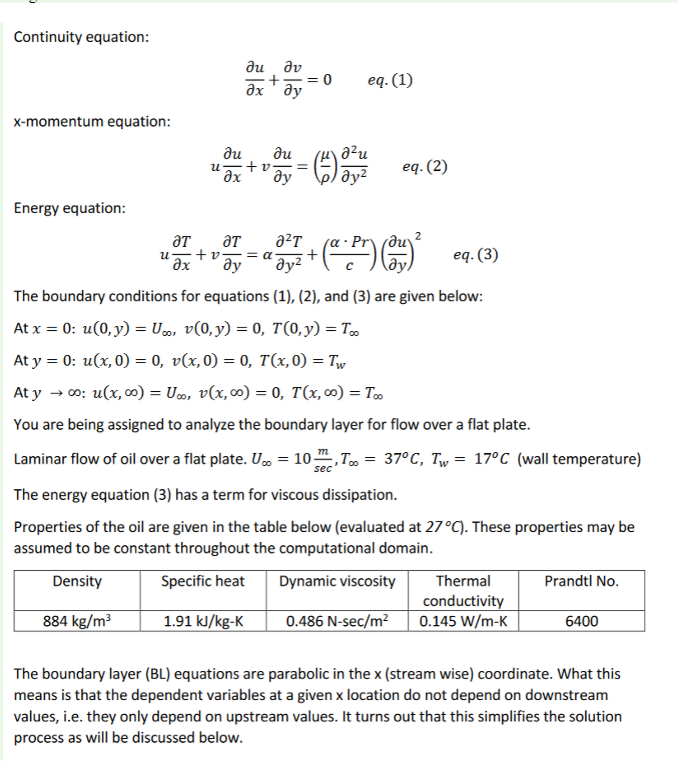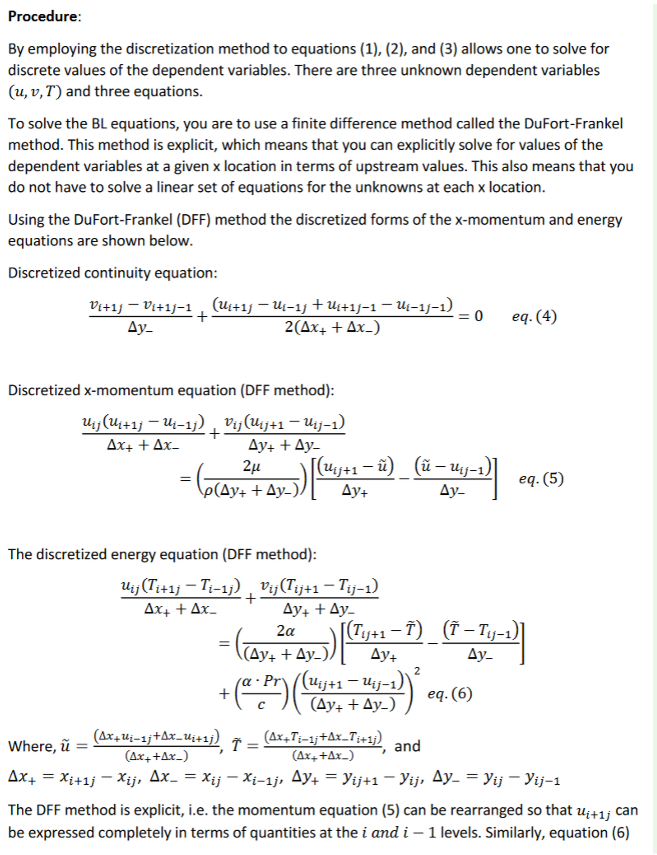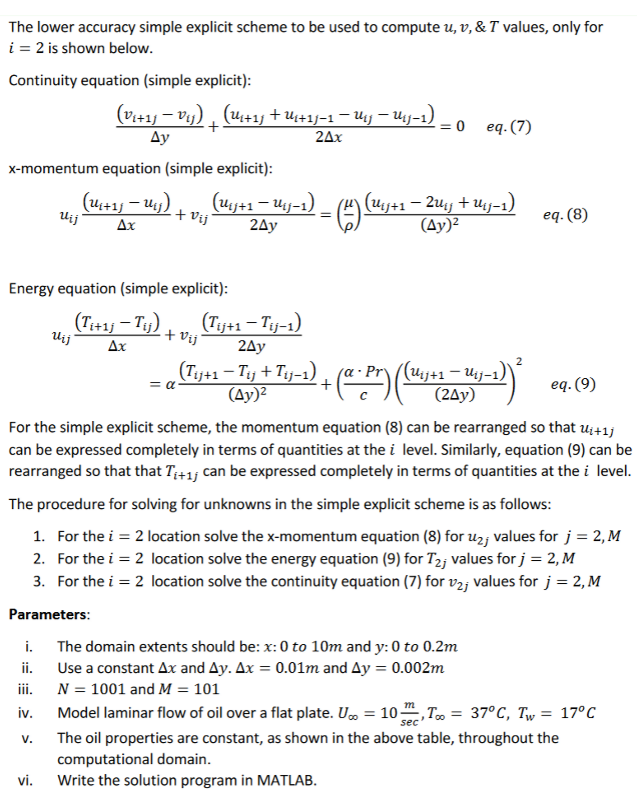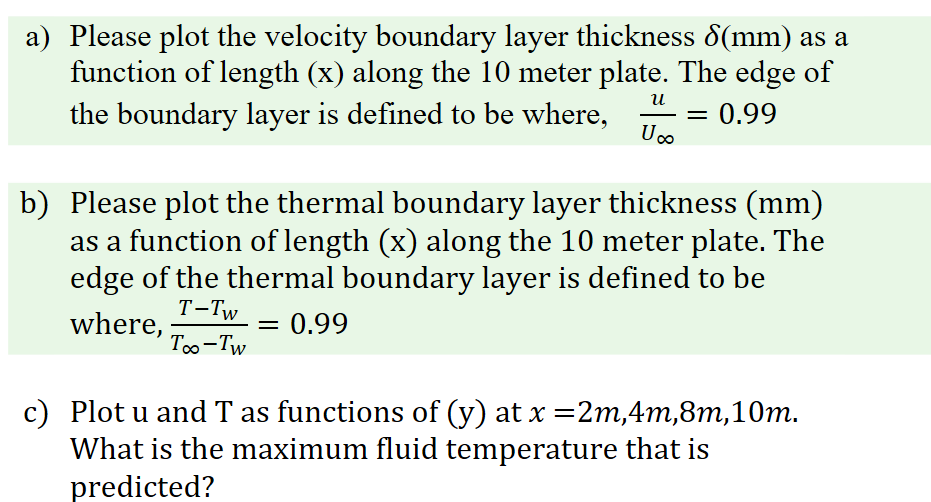Answered step by step
Verified Expert Solution
Question
1 Approved Answer
Solve the incompressible boundary layer equations for laminarflow over a flat plate, assuming that viscous dissipation isactive. The boundary layer equations are given below: Continuity
Solve the incompressible boundary layer equations for laminarflow over a flat plate, assuming that viscous dissipation isactive. The boundary layer equations
are given below:





Continuity equation: x-momentum equation: Energy equation: U T T x +v v + x y du ????u +v x = =0 aT eq. (1) u = (5) 3,72424 eq. (2) Jy + ( 7 ) (34) eq. (3) The boundary conditions for equations (1), (2), and (3) are given below: At x = 0: u(0, y) = U, v(0,y) = 0, T(0, y) = Too At y = 0: u(x,0) = 0, v(x,0) = 0, T(x,0) = Tw At y o: u(x, 0) = U, v(x,) = 0, T(x, 0) = To You are being assigned to analyze the boundary layer for flow over a flat plate. Laminar flow of oil over a flat plate. U = 10 m, T = 37C, Tw= 17C (wall temperature) sec The energy equation (3) has a term for viscous dissipation. Properties of the oil are given in the table below (evaluated at 27 C). These properties may be assumed to be constant throughout the computational domain. Density Specific heat Dynamic viscosity 884 kg/m 1.91 kJ/kg-K 0.486 N-sec/m Thermal conductivity 0.145 W/m-K Prandtl No. 6400 The boundary layer (BL) equations are parabolic in the x (stream wise) coordinate. What this means is that the dependent variables at a given x location do not depend on downstream values, i.e. they only depend on upstream values. It turns out that this simplifies the solution process as will be discussed below.
Step by Step Solution
★★★★★
3.35 Rating (155 Votes )
There are 3 Steps involved in it
Step: 1

Get Instant Access to Expert-Tailored Solutions
See step-by-step solutions with expert insights and AI powered tools for academic success
Step: 2

Step: 3

Ace Your Homework with AI
Get the answers you need in no time with our AI-driven, step-by-step assistance
Get Started


